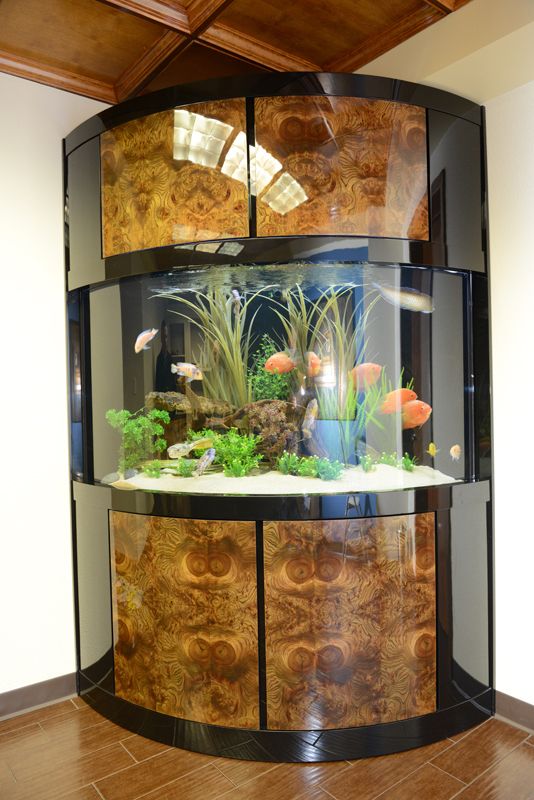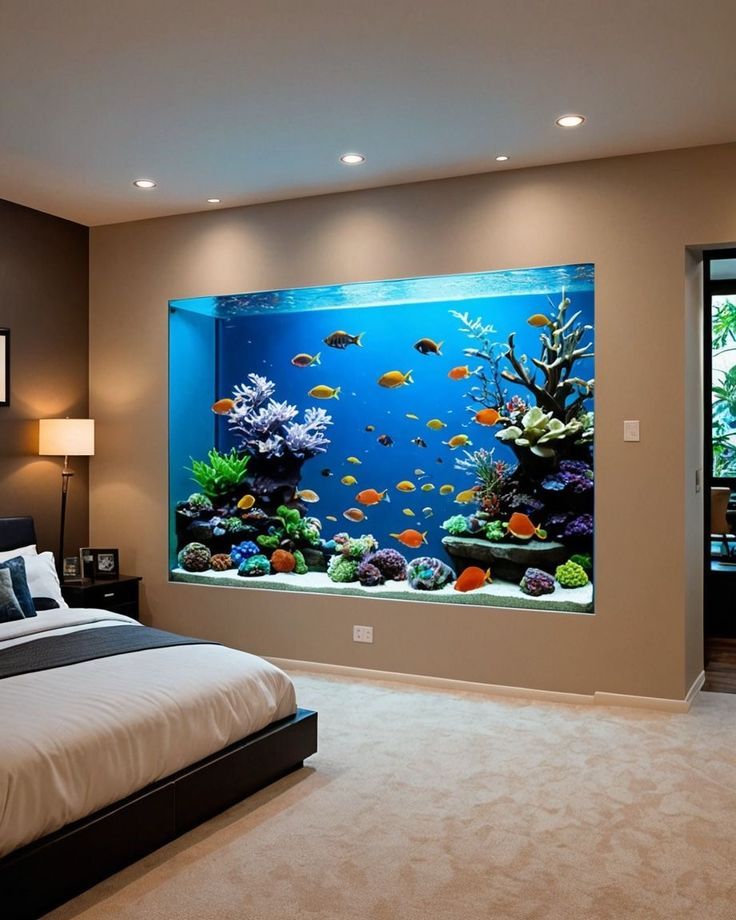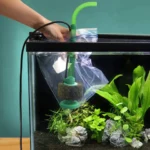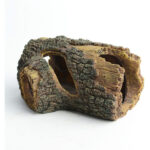Imagine walking into a room and catching a glimpse of gentle bubbles rising in a beautifully lit glass corner. That calming movement of fish gliding through water not only draws attention but also brings a unique sense of tranquility to the space. That’s the magic of a corner fish tank—a sleek, space-saving solution that elevates your interior while providing a stunning aquatic ecosystem.
Whether you’re new to aquariums or looking to upgrade your setup, a corner fish tank offers a perfect blend of practicality and style. But what exactly makes this type of tank so special? And how do you choose the right one for your needs? Let’s dive into a comprehensive, friendly, and well-researched guide to everything you need to know.
Table of Contents
Why a Corner Fish Tank Is More Than Just a Space Filler
A corner fish tank isn’t just a way to use up awkward wall intersections—it’s a statement piece. Unlike traditional rectangular tanks that require dedicated wall space, corner tanks are designed to fit snugly into unused areas, making them ideal for:
- Small apartments
- Home offices
- Living rooms with limited layout options
- Modern interiors looking for a stylish focal point
More importantly, they create a panoramic effect due to their curved or angular glass fronts, offering a wider viewing experience.
Benefits at a Glance:
- Maximizes space in tight rooms
- Creates a natural room divider without blocking light
- Adds depth and aesthetic appeal
- Easier to maintain in smaller sizes
- Available in various styles and capacities
Popular Types of Corner Fish Tanks
The market offers a range of corner fish tank designs, and each one caters to different aesthetic and functional preferences. Here are some of the most common types:
1. Bow Front Corner Tank
These tanks feature a rounded, outward-curving front, giving a 180-degree view of the fish. They blend well with contemporary interiors.
Best for: Those who want a stylish display and enhanced viewing angles.

2. Triangle Corner Tank
Perfectly angular, these tanks sit flush in tight corners with a flat front and two side panels. They take up less space but may limit your fish selection due to reduced volume.
Best for: Small spaces or beginners.
3. Pentagon or Hexagon Corner Tank
These offer a unique geometric look and more interior volume than triangles. However, cleaning can be tricky due to multiple angles.
Best for: Advanced users seeking design flair.
4. Custom-Built Corner Tanks
These are tailored to your specific room dimensions and design preferences. They often come with built-in cabinetry or wall inserts.
Best for: Serious aquarists or home designers creating a centerpiece.
Comparing Corner Fish Tanks to Standard Aquariums
Let’s put it side-by-side to see how a corner fish tank stacks up against standard rectangular tanks.
| Feature | Corner Fish Tank | Standard Tank |
|---|---|---|
| Space Efficiency | High – fits tight corners | Medium – requires wall space |
| Viewing Angles | Excellent (especially bow front) | Limited to front panel |
| Design Appeal | Stylish and modern | Traditional look |
| Maintenance Access | Slightly harder in deep corners | Easier with full access |
| Custom Options | Available, but often pricier | Widely available |
From a functional standpoint, both types can support freshwater or saltwater environments, but the corner fish tank wins in terms of aesthetic uniqueness and space-saving benefits.
Choosing the Right Corner Fish Tank: What You Must Consider
Before making a purchase, here are the essential factors you should evaluate:
1. Tank Size
- Small Tanks (5–20 gallons): Ideal for beginners or Betta fish.
- Medium Tanks (20–50 gallons): Great for community freshwater setups.
- Large Tanks (50+ gallons): Suitable for saltwater tanks or larger species.
Tip: Never overstock a corner fish tank. It may look compact, but fish still need adequate swimming space and filtration.
2. Material
- Glass: Scratch-resistant and clear, but heavy.
- Acrylic: Lightweight and impact-resistant, but scratches easily.
3. Stand and Support
Because of the unique shape, not all furniture will support a corner fish tank. Make sure to get a matching stand that distributes weight evenly and offers access to filtration systems.
4. Filtration and Equipment Placement
With less space behind the tank, external filters might require creative placement. Consider:
- Canister filters tucked underneath
- Internal filters for smaller tanks
- Corner-compatible lighting systems
Real-World Tips from Corner Tank Owners
Drawing from personal experience and online aquarist forums, here are some smart tips that will help you set up your corner fish tank like a pro:
1. Use Backgrounds Wisely
Most of the rear surface is hidden, but using a dark or textured background can enhance depth and fish colors.
2. Aquascape with Layers
Build your substrate higher at the back and slope forward. This technique maximizes visual depth and makes the tank appear larger.
3. Opt for Tall Plants
Vertical space is often more available in corner tanks. Use tall plants like Vallisneria or Cabomba to fill the upper areas.
4. Mind the Cleaning Angles
Invest in magnetic glass cleaners with corner-friendly edges. Deep corners are tricky to reach with hands alone.
Best Fish for Corner Fish Tanks
Not all fish thrive in every tank type. Given the often smaller footprint of a corner tank, it’s best to choose species that enjoy calm environments and don’t require too much horizontal swimming space.
Here are some top recommendations:
For Freshwater:
- Betta fish
- Neon tetras
- Corydoras catfish
- Guppies
- Dwarf gouramis
For Saltwater:
- Clownfish
- Royal gramma
- Firefish
- Cleaner shrimp
- Zoanthid corals (for reef setups)
Avoid: Large, fast-swimming fish like goldfish, angelfish, or oscars unless you’re using a large tank (50+ gallons).
Design Ideas to Make Your Corner Tank Pop
A well-designed corner fish tank can become a visual anchor in your room. Here are some creative design directions:
1. Natural Biotope
Replicate a specific habitat like the Amazon river or African rift lake with rocks, driftwood, and native plants.
2. Minimalist Zen Tank
Use white sand, a single stone, and carefully pruned plants for a peaceful, modern look.
3. Color Theme
Pick a theme color (like blue or green) and select matching fish, lighting, and décor for a cohesive visual experience.
Maintenance Made Easy: A Weekly Routine
Even though a corner fish tank looks sleek, it still requires regular care. Here’s a simplified weekly checklist:
- Daily: Feed fish, check filter flow and temperature
- Weekly: Water change (10–20%), gravel vacuum, glass cleaning
- Monthly: Filter media rinse, plant trimming, equipment inspection
Pro Tip: Keep a small step stool nearby if your tank is tall or placed in a high corner.
Mistakes to Avoid with Corner Fish Tanks
Let’s save you from some common headaches:
- Ignoring weight load: A full tank is heavy—make sure your floor and furniture can handle it.
- Overcrowding: Corner tanks can be deceiving in space. Stick to species size limits.
- Skipping quarantine: New fish can bring diseases—use a separate tank for at least 2 weeks.
- Bad lighting: Corners may not get ambient light; invest in a reliable LED system.
Conclusion: Should You Get a Corner Fish Tank?
If you’re looking for a modern, space-saving, and visually striking way to enjoy the joys of aquascaping, a corner fish tank is a fantastic option. It combines functionality and elegance while allowing even small spaces to host a beautiful aquatic world.
Whether you’re setting up a peaceful Betta tank in your bedroom or creating a vibrant reef in your living room corner, this unique aquarium design helps you enjoy nature’s beauty without compromising on space or style.
Your next steps?
Pick the right shape, plan your design, stock it responsibly, and enjoy the calming charm that only a well-set-up corner fish tank can offer.



